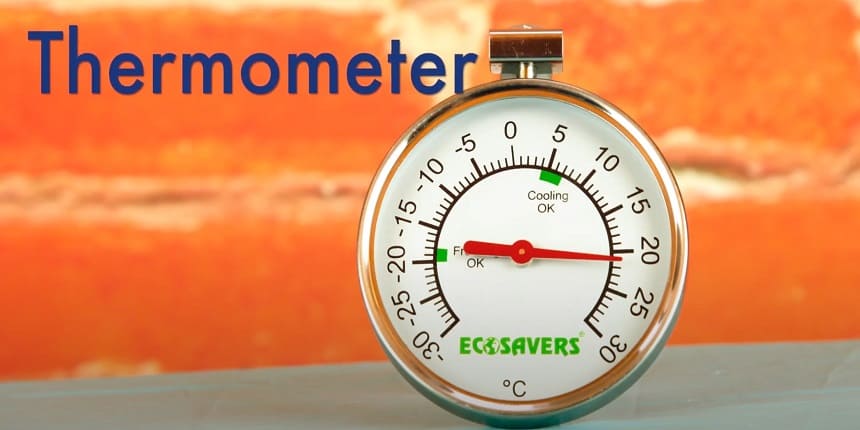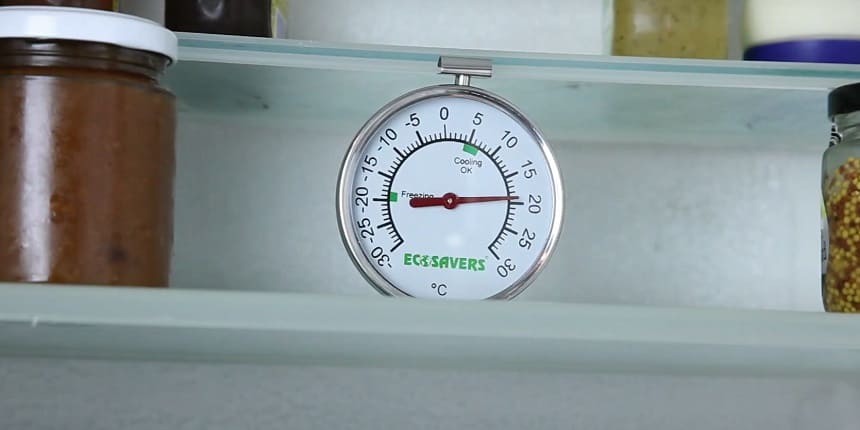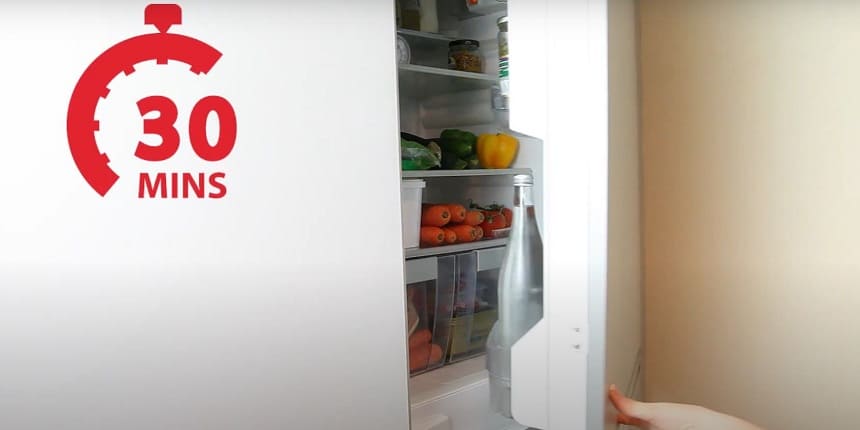To check the freezer temperature with a thermometer, place the thermometer in the freezer for accurate reading. It helps in ensuring food safety and quality by maintaining the ideal temperature range.
Freezers should be kept at 0°F (-18°C) for long-term storage to prevent food spoilage and maintain freshness. Measuring the temperature regularly using a thermometer is important for proper freezer maintenance and efficient food preservation. By monitoring the temperature, you can promptly address any issues that may arise, such as a malfunctioning freezer or a door left ajar.
This simple practice can save you from potential food wastage and ensure that your frozen items remain safe for consumption.
The Importance of Ideal temperature setting for Freezer

The freezer temperature plays a crucial role in ensuring food safety and preservation, as well as promoting energy efficiency. It is important to maintain the proper temperature in your freezer to keep your food fresh and prevent bacterial growth.
A freezer thermometer is an essential tool that allows you to accurately monitor the temperature inside your freezer. By regularly checking the temperature, you can ensure that it is set at the recommended level of 0 degrees Fahrenheit or below. This will help preserve the quality and taste of your frozen food, extending its shelf life.
Moreover, maintaining the right temperature in your freezer can also lead to energy efficiency, as a freezer that is too warm requires more energy to operate and may lead to higher electricity bills. By taking simple steps like checking the freezer temperature with a thermometer, you can ensure food safety, preserve your frozen goods, and save energy.
Common Issues With Inaccurate Freezer Temperature Measurement
One of the common issues with inaccurate freezer temperature measurements is the risk of spoiled food.
When the temperature is not at the optimal level, it can lead to food spoilage, resulting in waste and potential health hazards.
Moreover, an incorrectly set freezer temperature can also lead to increased energy consumption, as the freezer works harder to maintain the set temperature. This can result in higher electricity bills and unnecessary energy usage. It is important to regularly check the freezer temperature with a thermometer to ensure that it remains at the recommended level for food safety and energy efficiency.
Types Of Thermometers For Freezer Temperature Measurement

Measuring the temperature in the freezer is crucial to ensure the preservation of food. There are two main types of thermometers used for this purpose.
Digital thermometers provide quick and accurate readings, while dial thermometers are more traditional and reliable.
Digital thermometers offer precise temperature readings and often come with additional features such as alarms to alert you of any temperature fluctuations.
On the other hand, dial thermometers are known for their durability and consistent performance. When choosing a thermometer for your freezer, consider the accuracy and ease of use to ensure the safety of your stored items.
Considerations For Selecting the Best Freezer Thermometer
When selecting a thermometer to check the temperature of your freezer, there are a few important considerations to keep in mind.
Accuracy and Precision: The primary purpose of using a thermometer is to ensure that the temperature reading is accurate and precise. Look for a thermometer that has been calibrated and has a high level of accuracy.
Ease of Use: A user-friendly thermometer will make it easier for you to check the freezer temperature. Consider a thermometer that has a clear display, simple controls, and is easy to read.
Cost: Thermometers are available at various price points. While it is important to consider your budget, prioritize the accuracy and reliability of the thermometer over its cost. Investing in a quality thermometer will ensure accurate temperature readings and help maintain the quality of frozen goods.
Check Some Pocket Friendly Best Thermometer To Measure Freezers Temperature Here!
Best Thermometer To Measure Freezer Temperature
Explore our selection of affordable thermometers designed to accurately measure your freezer’s temperature. Keep your frozen goods safe and ensure optimal storage conditions, check them out here!
How to Measure Freezer Temperature With Thermometer Accurately
Step #1: Ensure The Freezer Is Stable adjust freezer temperature
Before checking the temperature of your freezer with a thermometer, it is important to allow sufficient time for stabilization. This ensures accurate readings and provides a reliable measure of the freezer’s temperature.
Stability can be achieved by keeping the freezer door closed for at least 30 minutes before taking the measurement. Avoid opening and closing the door frequently during this period to maintain the internal temperature.
Once the freezer has stabilized, carefully place the thermometer in a central location. Ensure that the thermometer is not in direct contact with any frozen items as this can affect the accuracy of the reading.
If you have a digital thermometer, simply turn it on and wait for a few seconds until the reading stabilizes. If you are using an analog thermometer, you may need to gently tap it or hold it in place for a few moments to get an accurate reading.
After the thermometer reading has stabilized, take note of the temperature displayed. This will give you an indication of whether your freezer is functioning correctly or if adjustments need to be made.
Remember to record the temperature in a reliable location for future reference, such as a notepad or the freezer maintenance log. Regularly monitoring the temperature will help you identify any potential issues early on and ensure the safe storage of your frozen goods.

Step #2: Select An Appropriate Location For The Thermometer
When checking the freezer temperature with a thermometer, it is important to select an appropriate location for accurate readings. Avoid placing the thermometer near the door or cooling elements, as these areas may not accurately represent the overall temperature inside the freezer.
Instead, opt for a location towards the center of the freezer, preferably on a middle shelf. This will give you a more reliable reading of the average temperature throughout the freezer compartment.
By placing the thermometer in a central location, you can ensure that it is not affected by any temperature fluctuations from the door opening and closing or the cooling elements active. This will provide a more consistent and accurate measurement of the freezer temperature.
Step #3: Calibration Of The Thermometer
After obtaining a freezer thermometer, it is essential to ensure its accuracy through calibration. Checking the accuracy is a crucial step since an inaccurate thermometer may lead to improper temperature readings. To calibrate the thermometer, follow these steps:
- Prepare a glass filled with crushed ice and add enough water to cover it.
- Insert the thermometer probe into the water without touching the sides or bottom of the glass.
- Wait for a few minutes until the thermometer stabilizes.
- Check the temperature reading on the thermometer. It should indicate 32°F (or 0°C) since that’s the freezing point of water.
- If the reading is outside the expected range, you may need to adjust the thermometer accordingly. Refer to the manufacturer’s instructions or consult a professional for guidance.
- Repeat the calibration process periodically to ensure ongoing accuracy of the thermometer.
By following these calibration steps, you can ensure the thermometer provides accurate readings while checking the freezer temperature. This will help you maintain the ideal conditions for food storage and preserve its quality.
Step #4: Taking The Temperature Reading – the thermometer freezer should read

When checking the freezer temperature with a thermometer, it’s crucial to place the thermometer correctly to ensure accurate readings. Position the thermometer in the center of the freezer, away from the walls and any food items.
Leave it in place for a few minutes to allow it to adjust to the temperature within the freezer. Once the thermometer has stabilized, carefully read and record the temperature reading.
Ensure that the temperature is within the recommended range for freezers, typically between 0 to 5 degrees Fahrenheit (-18 to -15 degrees Celsius). Taking regular temperature readings helps to maintain the quality and safety of the frozen items stored in the freezer.
Step #5: Interpreting The Results – appropriate freezer temperature
When interpreting the results of your freezer temperature check, it’s important to understand the safe temperature range for a freezer. The ideal temperature for a freezer should be 0°F (-18°C) or lower to ensure food safety.
Any reading above this temperature could indicate potential issues such as spoiled food or inefficient cooling. It’s crucial to address any deviations from the safe temperature range immediately to prevent food spoilage and maintain the quality of frozen items.
The End
To conclude, checking the freezer temperature with a thermometer is a simple yet essential step in maintaining the quality and safety of your frozen food. By following the steps outlined in this blog post, you can ensure that your freezer is functioning optimally and keeping your food at the right temperature.
Remember to regularly check and adjust the temperature to avoid any potential issues. Keeping your freezer temperature in check will not only extend the shelf life of your food but also save you from potential health risks. So, grab a thermometer and start monitoring your freezer temperature today!
